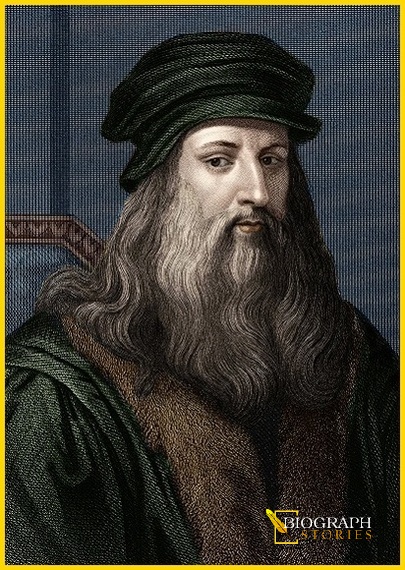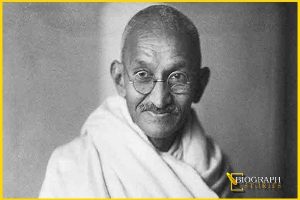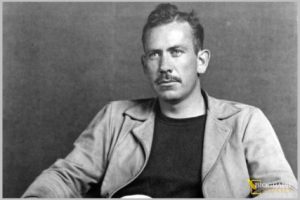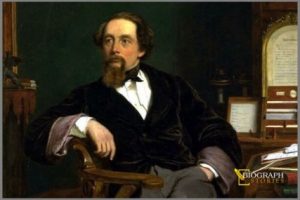
Leonardo Da Vinci Quick Fact:
Date of birth: April 14 , 1452,
Leonardo Da Vinci Italian A timeless painter of the Renaissance . Of course, Of course, Leonardo da Vinci is also known for his many talents – sculptor , architect , musician, martial artist and many scientific discoveries of the twentieth century.Behind the scenes father.
Place of birth: Anchiano, near in a village in the remote city of Vinci, Florence (Italy).
Occupation:Italian artist, engineer, and scientist
Date of death: May 2, 1519
Place of death: Cloux [now Clos-Lucé], France.
Leonardo Da Vinci Biography
Leonardo di ser Piero da Vinci (14/15 April 1452 – 2 May 1519), more commonly Leonardo da Vinci was an Italian polymath of the Renaissance whose areas of interest included invention, drawing, painting, sculpting, architecture, science, music, mathematics, engineering, literature, anatomy, geology, astronomy, botany, writing, history, and cartography. He is widely recognized as one of the greatest painters of all time. The Mona Lisa is the most famous of his works and the most popular portrait ever made.The Last Supper is the most reproduced religious painting of all time and his Vitruvian Man drawing is regarded as a cultural icon as well.
Although he had no formal academic training, Leonardo was an example of the ‘Universal Genius’ and considered as one of the most diversely talented individuals ever to have lived.
Leonardo is revered for his technological ingenuity. He conceptualized flying machines, a type of armored fighting vehicle, concentrated solar power, an adding machine, and the double hull. Relatively few of his designs were constructed or even feasible during his lifetime as the modern scientific approaches to metallurgy and he is also sometimes credited with the inventions of the parachute, helicopter, and tank. He made substantial discoveries in anatomy, civil engineering, geology, optics, and hydrodynamics, but he did not publish his findings and they had no direct influence on subsequent science. This talented and legendary painter died on 1519.
Personal life of Leonardo Da Vinci
Leonardo was born on 14/15 April 1452in the Tuscan hill town of Vinci in Republic of Florence. He was the son of Messer Piero Fruosino di Antonio da Vinci and Caterina Buti del Vacca.
Leonardo spent his in the hamlet of Anchiano in the home of his mother, and lived in the family of his father till 1457. Leonardo had 12 half-siblings.
Leonardo received an informal education in Latin, geometry and mathematics. In the mid-1460s, around the age of 14, he became a garzone (studio boy) in the workshop of Verrocchio who was the leading Florentine painter and sculptor of his time. Leonardo became an apprentice by the age of 17 and kept his training for seven years. Leonardo had theoretical training and a wide range of technical skills, including drafting, chemistry, metallurgy, metal working, plaster casting, leather working, mechanics, and wood-work, artistic skills of drawing, painting, sculpting, and modelling.
At the age of 20, Leonardo qualified as a master in the Guild of Saint Luke and even after his father set him up in his own workshop, he continued to collaborate and live with Verrocchio.
By having extraordinary powers of invention, outstanding physical beauty, infinite grace, great strength and generosity, Leonardo used to have many friends who are now renowned either in their fields or for their historical significance like Luca Pacioli.
Leonardo used to keep his private life secret which is why his sexuality has been the subject of doubt, analysis, and rumor. Leonardo’s most close relationships were perhaps with his student Salaì and Melzi. It has been claimed since the 16th century that these relationships were of a sexual or erotic nature.
By the 1490s Leonardo had already been described as a “Divine” painter. Among the qualities that make Leonardo’s work unique are his innovative techniques for laying on the paint; his detailed knowledge of anatomy, light, botany and geology; his interest in physiognomy.
Professional life and accomplishments
In 1478, Leonardo received an independent commission to paint an altarpiece for the Chapel of St. Bernard in the Palazzo Vecchio later on in March 1481, he received a commission from the monks of San Donato in Scopeto for The Adoration of the Magi. In 1482, he casted a silver stringed instrument from a horse’s skull and ram horns to bring to Sforza.
Leonardo worked in Milan from 1482 until 1499. He was commissioned to paint the Virgin of the Rocks for the Confraternity of the Immaculate Conception and The Last Supper for the monastery of Santa Maria delle Grazie.
In the spring of 1485, Leonardo travelled to Hungary on behalf of Sforza to meet Matthias Corvinus, and was commissioned by him to paint a Madonna.
During Second Italian War, Leonardo, with his assistant Salaì and Luca Pacioli, went to Milan for Venice. There, he was employed as a military architect and engineer to devise methods to defend the city from naval attack.
He returned to Florence in 1500 as guest of the Servite monks at the monastery of Santissima Annunziata and built a workshop there. In Cesena in 1502, Leonardo entered the service of Cesare Borgia as a military architect and engineer and travelling throughout Italy with his patron.
Leonardo returned to Florence and rejoined the Guild of Saint Luke on 18 October 1503. That year, he had begun working on a portrait of Lisa del Giocondo until his last years. In January 1504, he was part of a committee formed Michelangelo’s statue of David should be placed. He then spent two years in Florence designing and painting a mural of The Battle of Anghiari for the Signoria. While in Florence, he wrote in the Codex Atlanticus of the Da Vinci Globe (1504).
In 1506, Leonardo was summoned to Milan by Charles II d‘Amboise to finish The Battle of Anghiari, but he was given leave at the behest of Louis XII. In 1507, Leonardo was in Florence sorting out a dispute with his brothers over the estate of his father, who had died in 1504. By 1508, Leonardo was back in Milan, living in his own house in Porta Orientale in the parish of Santa Babila.
Old age and death
In 1512, Leonardo was working on plans for an equestrian monument for Gian Giacomo Trivulzio, and in March of that year, Leonardo went to Rome that September, where he was received by the pope’s brother Giuliano. From 1513 to 1516, Leonardo spent much of his time living in the Belvedere Courtyard in the Apostolic Palace with an allowance of 33 ducats a month.
In 1516, Leonardo entered Francis’ service at the royal Château d’Amboise to draw plans for a castle town for the king to create at Romorantin, and made a mechanical lion.He was accompanied by his friend and trainee Francesco Melzi. There are some rumors that Leonardo’s right hand became paralytic at the age of 65 causing the Mona Lisa unfinished. Still he continued to work at some capacity until eventually becoming ill and bedridden for several months.
Leonardo died at Clos Lucé on 2 May 1519 at the age of 67 due to a stroke. In his last days, Leonardo sent for a priest to make his confession and to receive the Holy Sacrament. His close trainee, Melzi was the principal heir and executor, receiving, as well as money, Leonardo’s paintings, tools, library and personal effects.
Paintings and works:
In the 16th century, Mona Lisa or “la Gioconda”, the laughing one, is possibly the most famous painting in the world till this day. Its fame rests on the mysterious smile on the woman’s face.It has a wonderful shadow quality for which it is called “sfumato”, or Leonardo’s smoke.
Another artistic masterpiece created by him was Virgin and Child with St. Anne that picks up the theme of figures in a landscape which was breathtakingly beautiful. There are two obliquely set figures overlaid.
Leonardo’s The Battle of Anghiara was a fresco commissioned in 1505 for the Salone dei Cinquecento in the Palazzo Vecchio, Florence. Its core work scene showed four men riding raging war horses engaged in a battle for possession of a standard.
Leonardo used to keep journals full of small sketches and detailed drawings recording all manner of things that took his attention. Some of his famous drawing can be identified as The Adoration of the Magi, The Virgin of the Rocks and The Last Supper, Landscape of the Arno Valley, 1473, the Vitruvian Man, a study of the proportions of the human body; the Head of an Angel, for The Virgin of the Rocks in the Louvre; a botanical study of Star of Bethlehem; and a large drawing (160×100 cm) in black chalk on coloured paper of The Virgin and Child with St. Anne and St. John the Baptist in the National Gallery, London
Scientific studies
Leonardo contributed in many observational scientific study to understand a miracle by describing the subject in utmost detail. In 1490, he studied mathematics under Luca Pacioli and prepared a number of drawings of regular solids in a skeletal form to be engraved as plates for Pacioli’s book Divina proportione in 1509.
Aspects of his work on the studies of anatomy, light and the landscape were collected for publication by his student Francesco Melzi later on and eventually published as Treatise on Painting by Leonardo da Vinci in France and Italy in 1651 and Germany in 1724.
Anatomy and physiology
Leonardo started his study in the anatomy of the human body as an artist and became master of topographic anatomy, drawing many studies of muscles, tendons and other visible anatomical features.
From 1510 to 1511 he collaborated in his studies, he made over 240 detailed drawings and wrote about 13,000 words towards a treatise on anatomy. Also, he drew the heart and vascular system, the sex organs and other internal organs, making one of the first scientific drawings of a fetus in utero.
Engineering and inventions
Valued as an engineer throughout his life, in 1502, he created a structure for diverting the flow of the Arno River. He sustained to plan the canalization of Lombardy‘s plains while working in Louis XII’s company. He also has numerous inventions including a knight made of metal, musical instruments, hydraulic pumps, reversible crank mechanisms, finned mortar shells, and a steam cannon and so on.
In 1502, Leonardo produced a drawing of a single span 720 foot bridge to extent a bay at the mouth of the Bosporus known as the Golden Horn.
Leonardo always had fascination to fly like birds which influenced him to produce many studies, including Codex on the Flight of Birds. He attempted for several flying machines such as a flapping ornithopter and a machine with a helical rotor.








